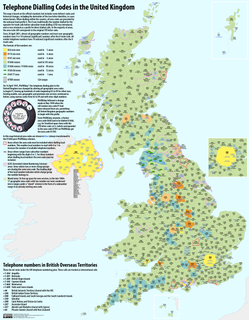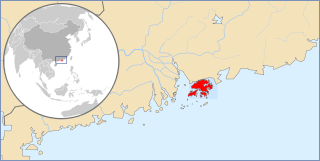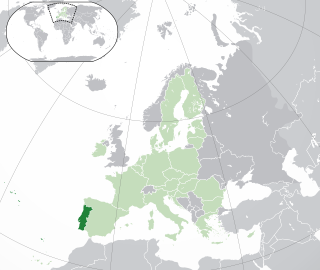Related Research Articles

The North American Numbering Plan (NANP) is a telephone numbering plan for twenty-five regions in twenty countries, primarily in North America and the Caribbean. This group is historically known as World Zone 1 and has the international calling code 1. Some North American countries, most notably Mexico, do not participate in the NANP.
Premium-rate telephone numbers are telephone numbers that charge callers higher price rates for select services, including information and entertainment. A portion of the call fees is paid to the service provider, allowing premium calls to be an additional source of revenue for businesses. Tech support, psychic hotlines, and adult chat lines are among the most popular kinds of premium-rate phone services. Other services include directory enquiries, weather forecasts, competitions and ratings televoting. Diplomatic services, such as the US Embassy in London or the UK Embassy in Washington, have also charged premium rates for calls from the general public.
A toll-free telephone number or freephone number is a telephone number that is billed for all arriving calls instead of incurring charges to the originating telephone subscriber. For the calling party, a call to a toll-free number from a landline is free of charge.
A telephone numbering plan is a type of numbering scheme used in telecommunication to assign telephone numbers to subscriber telephones or other telephony endpoints. Telephone numbers are the addresses of participants in a telephone network, reachable by a system of destination code routing. Telephone numbering plans are defined in each of the administrative regions of the public switched telephone network (PSTN) and in private telephone networks.

Telephone numbers in the United Kingdom are administered by the Office of Communications (Ofcom). For this purpose, Ofcom established a telephone numbering plan, known as the National Telephone Numbering Plan, which is the system for assigning telephone numbers to subscriber stations.
The Australian telephone numbering plan describes the allocation of phone numbers in Australia. It has changed many times, the most recent major reorganisation by the Australian Communications & Media Authority taking place between 1994 and 1998.
In Argentina, area codes are two, three, or four digits long. Local customer numbers are six to eight figures long. The total number of digits is ten, for example, phone number (11) 1234-5678 for Buenos Aires is made up of a 2-digit area code number and an 8-digit subscriber's number, while (383) 123-4567 would be an example of a Catamarca number.

Telephone numbers in Hong Kong are mostly eight-digit. Fixed land line numbers start with 2 or 3, mobile (cellular) phone numbers with 5, 6, 7 or 9, pager numbers with 7 and forwarding service with 8. Since the end of 1989, there have been no area codes within Hong Kong.
The Big Number Change addressed various issues with the telephone dialling plan in the United Kingdom, during the late-1990s and early-2000s.

Numbers on the Irish telephone numbering plan are regulated and assigned to operators by ComReg.

The dialling plan for mobile networks and new landline operators is closed; all subscriber numbers must be dialled in full. For landline numbers starting with 02, the dialling plan used to be open; the trunk digit and area code could be omitted if the caller was in the same area code as the callee. However, starting May 3, 2008, all landline numbers must be dialled in full.
Telephone numbers in Switzerland are defined and assigned according to the Swiss telephone numbering plan administered by the Swiss Federal Office of Communications. The plan has been changed several times and the most recent reorganization was implemented in March 2002.

PhONEday was a change to the telephone dialling plan in the United Kingdom on 16 April 1995. It changed geographic area codes and some telephone numbers. In most areas, a "1" was added to the dialling code after the initial zero. In Bristol, Leeds, Leicester, Nottingham and Sheffield, the area codes were replaced with new codes and the subscriber numbers gained an extra digit. The PhONEday changes also made provision for new ranges of subscriber numbers in those five cities. A £16m advertising campaign, and an eight-month period of parallel running during which old and new codes were active, preceded the change. PhONEday followed a change made in May 1990, when the old London area code 01 had been released from use, permitting all United Kingdom geographic numbers to begin with this prefix. Originally planned in 1991 to take place in 1994, in 1992 the change was postponed until the Easter Sunday bank holiday in 1995.

The Spanish telephone numbering plan is the allocation of telephone numbers in Spain. It was previously regulated by the Comisión del Mercado de las Telecomunicaciones (CMT), but is now regulated by the Comisión Nacional de los Mercados y la Competencia (CNMC).

Portugal changed to a closed telephone numbering plan on 31 October 1999; previously, the trunk prefix was '0', but this was dropped.

The regulation of telephone numbers in Germany is the responsibility of the Federal Network Agency of the German government. The agency has a mandate to telecommunications in Germany and other infrastructure systems.
Telephone numbers in Estonia follow a closed telephone numbering plan.
The national conventions for writing telephone numbers vary by country. While international standards exist in the form of the International Telecommunication Union sector ITU-T issued recommendation E.123, national telephone numbering plans define the format and length of telephone numbers assigned to telephones.
Country Code: +240
International Call Prefix: 00
Trunk Prefix:
The Belize telephone numbering plan is the system used for assigning telephone numbers in Belize.
References
- 1 2 3 "El Salvador". www.itu.int. Retrieved 2021-03-13.